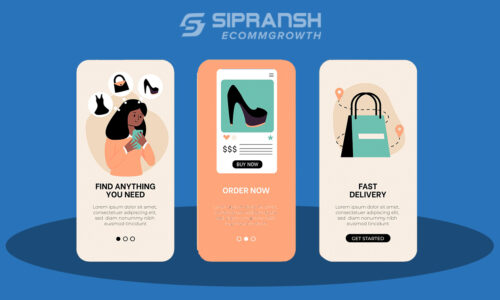
Getting your brand store live on Amazon is only the first step. After it’s live, your store needs constant check-ins to see if all the efforts you put into your store are actually translating into sales or not.
In February, Amazon launched three brand new metrics on the Brand Stores Insights dashboard. With these metrics, you can easily track your store’s average bounce rate, average dwell time, and new-to-store visitors. In this article, we’ll look into these and other brand store metrics and break them down in simple terms so you can understand exactly how your brand store is performing.
Why do most brands fail to check their brand store metrics?

Brands put so much time and resources into their Amazon store design but they miss out on the valuable insights Amazon is providing. They focus solely on efforts on aesthetics without considering how effective their beautiful designs are. By neglecting to track the brand store metrics, they remain unaware of how visitors are interacting with their brand and what adjustments may be necessary for optimal performance. It’s like driving a car without wheels – you won’t actually get anywhere.
Here are some reasons why most brands fail to check the performance of their store
- Lack of awareness: Most sellers simply aren’t aware of the metrics that can help measure the performance of their brand stores.
- Overemphasis on design: Sellers often prioritize the look of their store over functionality and performance metrics, assuming that a visually appealing Amazon storefront design will automatically translate into sales.
- Limited knowledge: Some sellers lack the knowledge or understanding of how to interpret metrics related to their brand store’s performance.
- Time constraints: With the demands of managing inventory, fulfilling orders, and handling customer inquiries, sellers may feel overwhelmed and neglect to allocate time for tracking and analyzing store metrics.
Newly launched Amazon brand store metrics

1: Bounce rate
Bounce rate indicates the percentage of visitors who walk away after viewing only one page. They don’t explore further or engage with any of your content. A high bounce rate suggests that shoppers are uninterested in your brand. This can be because of various factors such as slow loading times, confusing navigation, irrelevant content, or mismatched expectations. By actively managing bounce rate, brands can improve the overall effectiveness of their store and encourage shoppers to explore further.
Here are some simple strategies to reduce your brand store’s bounce rate:
- Simplify store navigation: Make it easy for shoppers to find what they’re looking for by implementing clear and intuitive navigation menus. Be sure to organize your products logically and provide prominent calls-to-action to guide shoppers through your store.
- Relevant content: Ensure that your brand store’s copy is relevant to your target audience and aligns with their interests and expectations. Highlight key products, promotions, and benefits to capture visitors’ attention and keep them engaged.
- Mobile-friendly design: With a maximum number of shoppers browsing on mobile devices, it’s essential to optimize your brand store for mobile responsiveness. Ensure that your store layout and content are easily accessible and viewable on smaller screen sizes.
- A/B testing: Experiment with different layouts, designs, and content formats to identify what resonates most with your audience. Use A/B testing to measure the impact of changes and iterate based on data-driven insights.
2: Average dwell time
As the name suggests, average dwell time is the average amount of time shoppers spend actively engaging with your content. It measures the duration between when a shopper enters your store and when they navigate away or complete a specific action, such as clicking on a product or navigating to another page. A longer average dwell time indicates that shoppers are spending more time exploring your store and interacting with your products, which can be a positive indicator of engagement and interest.
Here are some simple strategies to increase your brand store’s average dwell time:
- Engaging content: Ask your Amazon storefront designer to create informative multimedia content that captures shopper’s attention and encourages them to stay longer on your brand store. Use high-quality images, clear product descriptions, and beautiful videos to keep visitors engaged and interested in exploring further.
- Interactive elements: Incorporate interactive elements such as shoppable images and product demonstration videos that encourage shoppers to spend more time on your brand store. Interactive content not only entertains but also educates, informs and keeps visitors invested in exploring your products.
- Clear navigation: Ensure that your brand store is easy to navigate and that visitors can quickly find what they’re looking for. Use clear navigation menus, category filters, and search functionality to help visitors navigate your store effortlessly and find relevant products or information.
- Add prominent call-to-actions: Guide shoppers through your brand store and encourage them to take action by including prominent calls-to-action (CTAs) throughout your content. Whether it’s inviting visitors to explore related products, sign up for newsletters, or follow your brand on social media, CTAs help keep visitors engaged and focused on interacting with your brand.
- Personalize your content: Tailor the content on your brand store to match visitors’ interests and preferences. Leverage Amazon’s data analytics and segmentation tools to create content that resonate with shoppers and increase their likelihood of staying longer.
3: New-to-Store visitors
New-to-Store visitors are the fresh faces and potential new customers who are discovering your brand for the first time. This metric measures the percentage of shoppers who are visiting your store for the very first time. These shoppers are crucial because they represent opportunities to make a positive first impression, capture their interest, and turn them into loyal customers.
Here are some simple strategies to make the most of these new visitors
- Engaging content: Once you’ve captured their attention, keep them interested with engaging content. Highlight your best-selling products and share compelling stories about your brand to pique their curiosity and encourage them to explore further.
- Personalized recommendations: Show your new visitors that you understand their needs and preferences by offering product recommendations. Use data insights to suggest relevant products based on their browsing behavior and purchase history.
- Seamless navigation: Make it easy for new visitors to navigate your store and find what they’re looking for. Use intuitive navigation menus and clear categorization to help them quickly locate products and information without feeling overwhelmed or lost.
Already existing Amazon brand store metrics

4: Daily visitors
Daily visitors represent the number of unique shoppers who visit your store within a certain time period. Each visitor is counted only once, regardless of how many times they visit or how many pages they view during their visit. Monitoring daily visitors helps you understand the level of interest and engagement your brand store is generating on a day-to-day basis.
5: Page views
Page views refer to the total number of pages that are viewed by shoppers on your Amazon store within a specific timeframe, such as a day, week, or month. Each time a visitor loads a page on your store, it counts as a page view. Monitoring page views provides insight into which pages are most popular and engaging for visitors, as well as how effectively your content is driving exploration and interaction. Increasing page views can lead to higher engagement, longer dwell times, and ultimately, more sales.
6: Sales
Sales represent the total number of transactions completed on your Amazon store within a given timeframe, as well as the revenue generated from those transactions. Tracking sales is essential for measuring the success and profitability of your brand, as it directly reflects the effectiveness of your store design and product offerings. By monitoring sales metrics, you can identify trends, optimize your sales funnel, and make informed decisions.
7: Traffic sources
Traffic sources refer to the channels or platforms through which visitors arrive at your Amazon brand store. Common traffic sources include organic search (e.g., by clicking on your brand name on the product detail page), Sponsored Brand Ads, direct traffic (e.g., visitors typing your store URL directly into their browser), referral traffic (e.g., links from other websites or social media platforms), and email marketing campaigns. Understanding where your traffic is coming from helps you identify the effectiveness of your marketing channels, allocate resources more efficiently, and optimize your acquisition strategies.
Metrics matter
To wrap things up, keeping an eye on your daily visitors, page views, sales, and where your traffic is coming from is crucial for growing your Amazon brand store. It’s like having your finger on the pulse of your brand—it helps you understand what’s working and what needs improvement. We’re here to support you every step of the way. If you have any questions or need help making sense of your metrics, don’t hesitate to reach out to our Amazon experts.






